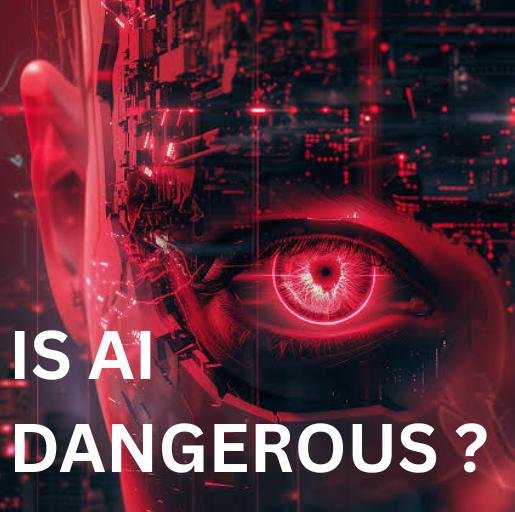AI Is Now a Part of Everyday Life
Artificial intelligence is everywhere. It helps us write, create, drive, make decisions, and even manage our homes. But with this incredible power comes a critical question:
Can AI be dangerous?
In 2025, experts around the world are discussing the real risks and responsibilities that come with advancing AI technology.
What Do We Mean by Dangerous AI?
When people talk about “dangerous AI,” they usually aren’t imagining killer robots or science fiction scenarios. Instead, they’re concerned about systems that can:
Make harmful decisions without human oversight
Spread false or misleading information
Discriminate unfairly based on biased data
Be exploited for hacking, spying, or manipulating people
These risks highlight the importance of building AI responsibly.
What Are the Experts Saying?
Leaders in tech and science have voiced serious concerns:
Elon Musk has repeatedly warned that without proper regulation, AI could grow beyond human control.
Sam Altman, CEO of OpenAI, supports stronger government oversight to ensure AI remains safe and beneficial.
Geoffrey Hinton, often called the “Godfather of AI,” left Google in 2023 specifically to raise awareness about AI’s risks.
Governments in the EU and the US are actively introducing laws to make sure AI is developed and used ethically.
Real Examples of AI Risks
AI is already creating real-world challenges, including:
Deepfakes: Highly realistic fake videos and audio that can damage reputations and spread lies.
Algorithmic bias: Systems making unfair decisions, such as favoring certain groups in hiring or law enforcement.
Job displacement: Automation replacing workers without providing paths for retraining.
Misinformation bots: AI-generated content that spreads false news or propaganda at scale.
What’s Being Done to Reduce the Risks?
The tech industry and regulators are working on several fronts to make AI safer:
Ethics committees: Many companies now have teams that review AI systems for safety and fairness.
Transparency rules: Some countries require AI-generated content to be clearly labeled.
Human oversight: More organizations use a “human-in-the-loop” approach to ensure people still make final decisions.
Public education: Guides, online resources, and talks help everyday users understand AI’s strengths and pitfalls.
How Can Everyday Users Stay Safe?
AI is becoming a normal part of daily life, and staying safe is largely about being a careful, informed user. Here are a few simple steps:
Use reputable platforms and tools.
Be skeptical of videos or news that seem too perfect or sensational.
Always double-check important facts, especially if the content was created by AI.
Avoid giving personal or financial information to unknown bots or automated systems.
Should You Be Afraid of AI?
Not really. Most AI today is designed to help, not harm. Like any tool—whether it’s a car, a smartphone, or electricity—AI needs to be used responsibly. With the right rules, thorough testing, and better awareness, AI can be incredibly safe and offer huge benefits.
Conclusion
AI holds enormous promise for improving our lives. But with great power comes great responsibility. By staying informed, asking thoughtful questions, and using technology wisely, we can all enjoy the benefits of AI while minimizing the risks.
If you want to learn more about the safe, simple, and smart use of AI in everyday life, follow AI for Mundane for more insights and practical guides.






